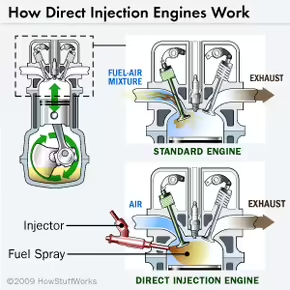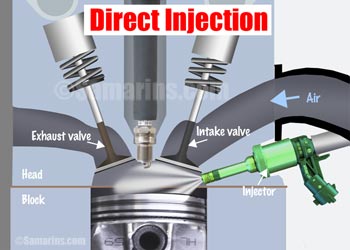Your Car Could Be Choking on Coke. Here’s Why.
And what to do about it.
In the fifties, the direct-injection (DI) engine was introduced in the Mercedes Benz 300SL Gullwing and it was a breakthrough. Not only was the DI engine able to achieve better performance, but it also consumed fuel more efficiently. The Gullwing went on to become the fastest car of its time.

This innovative fuel technology has come a long, long way since then, but has yet to overcome one particular problem. If you own a car that uses a DI engine, at as early as around the 40,000km mark on the odometer, you might realise that your car has lost that “brand new” performance: it has gotten thirstier, is less responsive when accelerating and the idling engine vibrates. If you’ve adhered to the maintenance schedule, then the problem could be coke in your engine. No, not the illegal white powdery stuff or Pepsi’s arch-rival, but carbon-buildup.
Fuel is just like the wood in your fireplace or charcoal in your barbeque grill – when it burns, it leaves behind carbon. And this carbon accumulates in the engine.
Fuel sold at the pumps today have additives to minimise carbon buildup and, in a conventional engine, would get sprayed at the intake valve, washing off the carbon deposits. In a DI engine, however, the fuel gets injected directly into the combustion chamber, below the intake valve, and thus coke tends to accumulate behind the intake valve:


If you refer to Youtube for car advice, there are too many videos recommending that you redline your engine every once in a while – redlining, aka the Italian tuneup, is revving the engine at its highest limits (the red line on the RPM gauge) to burn the deposits off. But it’s quite unlikely that you can rev the engine hard and long enough for the internal components to reach the required temperature unless you have a racetrack at your disposal, so don’t believe everything some random dude tells you on the Internet or you’ll end up destroying your engine.
You could get your engine cleaned professionally by your mechanic who would either blast the buildup off or use a solvent to clean it.
We like to first prevent the problem, of course, and the right additive will be able to do it. X-1R’s newly formulated 5-in-1 Petrol/Diesel Decarboniser was scientifically formulated to not only eliminate carbon from the engine but also prevent new deposits from forming, effectively reverting to and maintaining your car engine at “as new” condition.


A bottle every 5,000 kilometres or 3 months keeps the carbon away…as well as removes water contamination, boosts fuel and engine performance, increase fuel savings and reduces carbon emissions.
Our point is: Don’t let your car choke on coke. Visit www.x1r.com.



